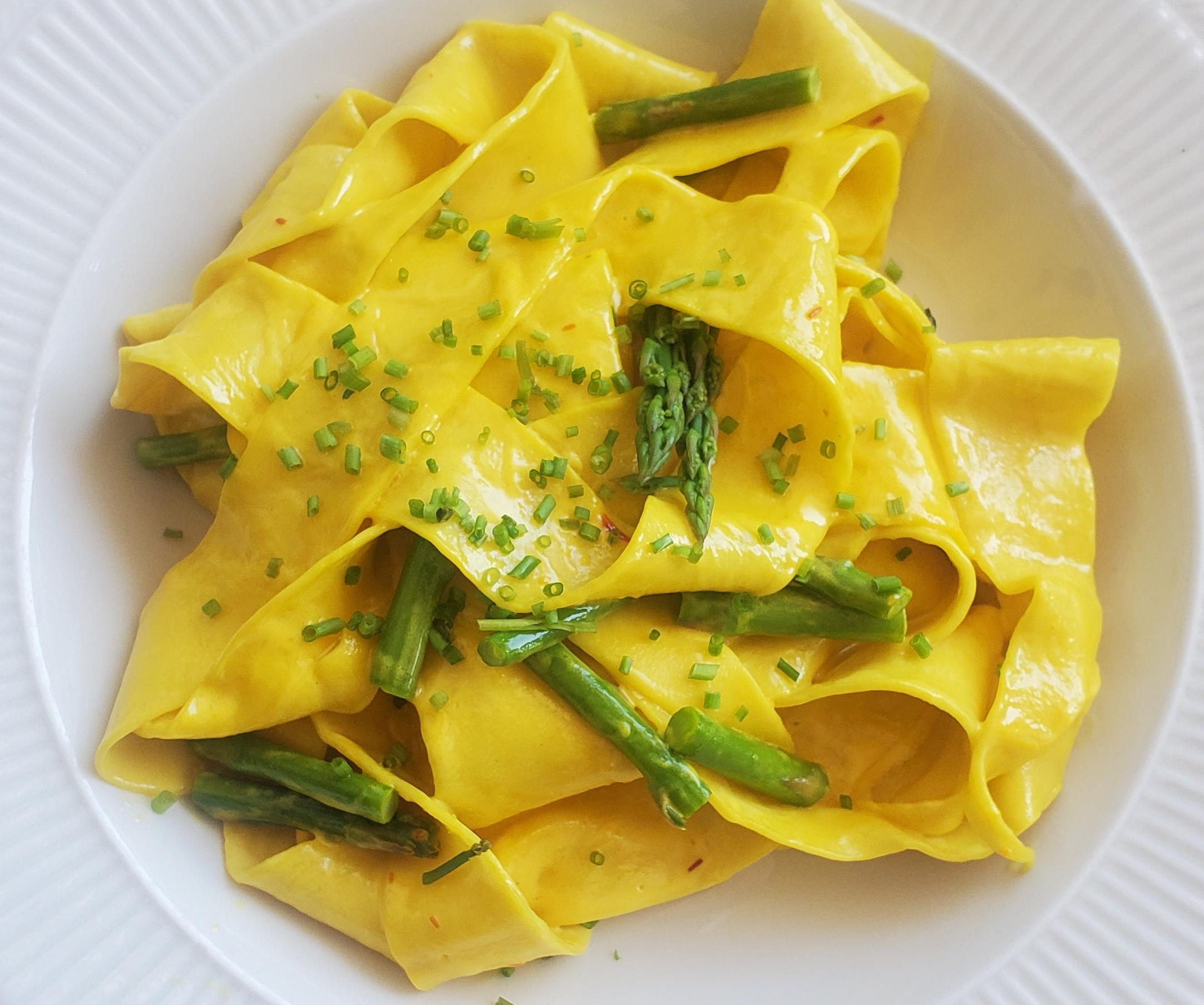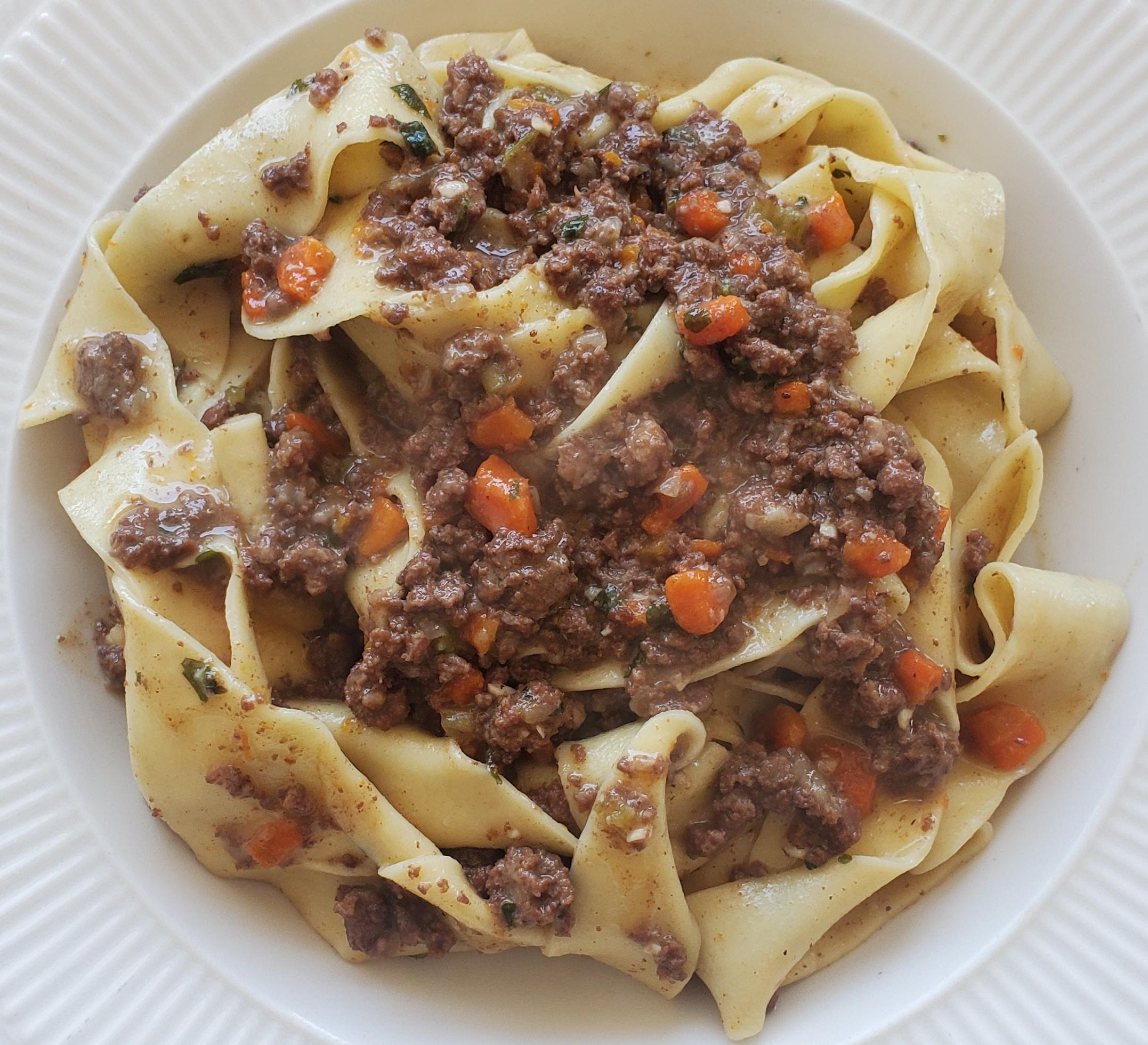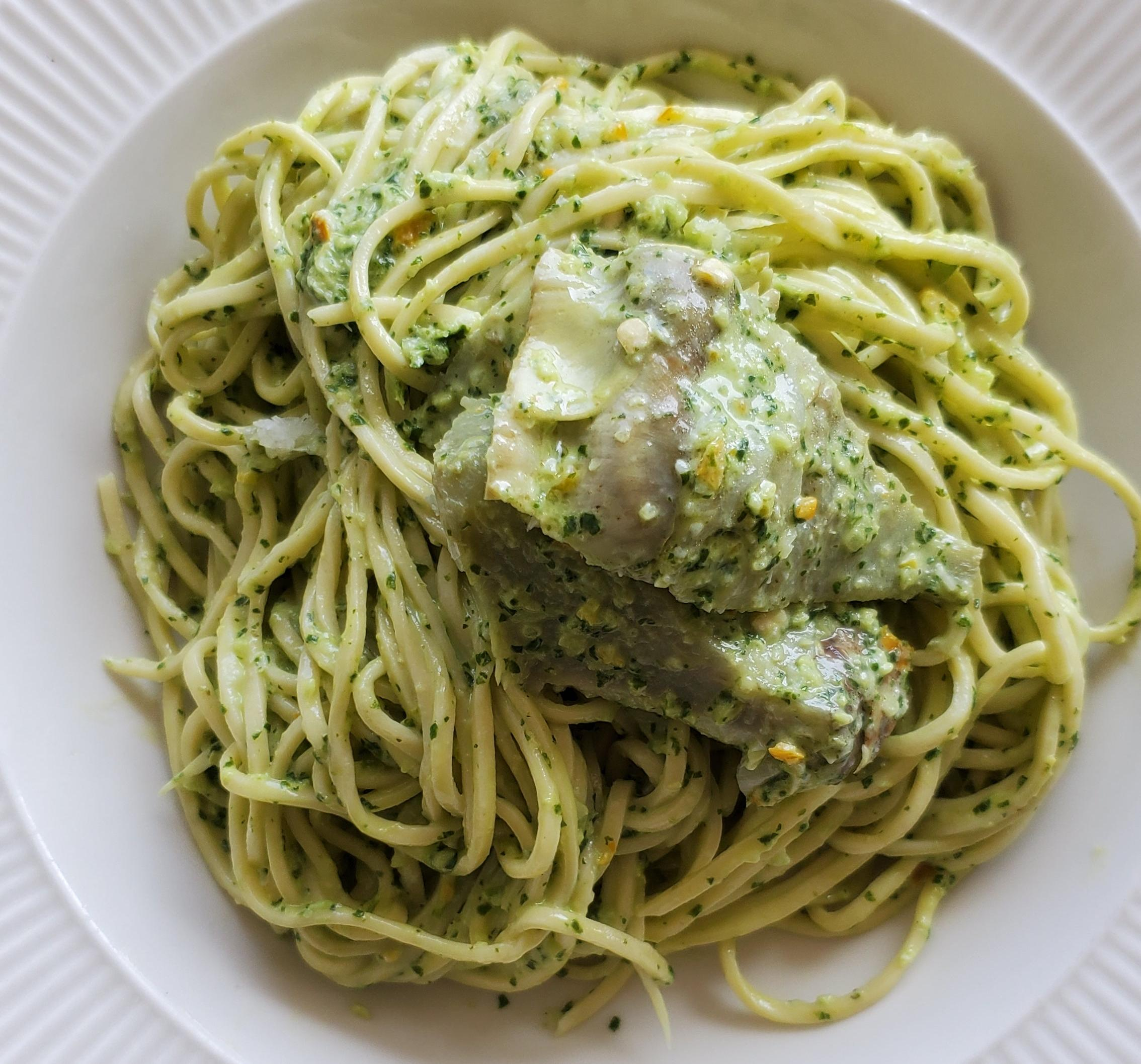I Made Fresh Pasta More Than 300 Times This Year—here's What I Learned
My pandemic side hustle was fresh pasta dinners, and I learned a lot.
We may receive a commission on purchases made from links.
I made too much pasta dough this past year. You see, I started a side business during the pandemic making pasta dinners for preorder, basically turning my small studio apartment kitchen into a to-go restaurant once a week. The top of my fridge was stacked with takeout boxes, plastic ramekins, and deli containers. A pasta machine or cavatelli crank remained clamped to my kitchen shelf at all times. Surfaces covered in flour. Countertops sprayed with red sauce. Scrambling to check my phone every 10 minutes because the whole side hustle operated successfully through Instagram DMs. It wasn't ideal, but it provided me with the extra cash I needed to keep my head above water during difficult times. And I got good at pasta.
I made pasta dough several times each week for over a year. I don't think I'll ever forget the exact ratio for my eggless pasta dough (6.8 ounces 00 flour, 6 ounces semolina, ¾ cup warm water, and a pinch of salt). I know a carton of eggs will make me 5 orders of pappardelle. I'll always know when dough is too sticky or too dry before things get past the point of no return. Once you've seen all the ways a ball of dough can turn out bad, you become fearless in the face of disaster. There is no longer any panic that the dough won't come together.
Do anything long enough and you develop a psychic connection with the process. Recently, I tried to describe my relationship to pasta-making in a conversation with someone, and they politely asked, "Did you used to be an addict?" People can sense it. I make pasta like I'm running from something.
I did my final pasta service last Sunday. No more bootlegged dinners being served out of my apartment. No more running a brown grocery bag full of sauced-up noodles to somebody double-parked on my street. Ghost kitchens, pop-ups, and makeshift entrepreneurship were crucial for many of us during the pandemic. But, at long last, I got a job. A staffed writing job, and so I get to leave the pasta business behind.
This is also my last Takeout article, hopefully not ever, but for the foreseeable future. So I figure we should go out talking about the thing I have the most experience in: pasta. I'm self-taught and have got a little bit of knowledge, so let's talk sticky-icky dough. Here's what I learned making hundreds of orders of fresh pasta this year.

Pasta dough thrives without eggs
In fact, as a matter of preference, I would say that eggless dough is my preferred dough. My favorite pasta shape is orecchiette, or little ears, which serve as the perfect cup-like vessel to hold hearty, chunky sauces like bolognese.
Orecchiette is traditionally made with semolina flour; semolina, which is coarsely ground durum wheat, has a higher gluten content and therefore produces chewier pasta. As mentioned earlier, I use a semolina/00 flour mixture and warm water to create my eggless pasta dough, and the result is a soft, chewy, silky pasta that for a second will make you think it's actually made from ricotta. Remember, the egg was introduced much later in the canon of pasta making. If you're interested in orecchiette, check out this video here:
Short pasta freezes way better than long pasta
Cavatelli, orrechiette, rigatoni, and the like all freeze really well. I stuff them in freezer bags and they keep for quite a while, about a month or so, before I notice a dip in quality. Short pastas don't lose much being frozen. They are fortified little tanks able to withstand the freezing process.
Longer pastas, for me, tend to lose their silky-fresh nature when you put them in a freezer. Spaghetti breaks too easily when nested and stored at cold temperatures. To achieve pappardelle's best attributes, it must be cut and immediately thrown in water. I don't even like storing long pasta in the fridge unless I have to. Tip: If you're going to keep fresh long pasta in a fridge, make sure to dry it out for a bit. I do the classic "hang spaghetti over the back of a chair" grandma method.
Get a bench scraper
Yeah, you need a bench scraper—this thing. A bench scraper does such a great job chopping up dough and helping to form your initial shaggy ball. And when it comes time to clean up and get the little stuck clumps of flour off the cutting board, nothing works better to scrape up those bits. I've seen line cooks use bench scrapers to clean up stainless steel countertops with ease; you could use it to scrape paint, it's that useful.
00 flour is worth it, actually
Look, if you're taking up the arduous task of making fresh pasta at home, you might as well go big. Spring for "00" (double zero) flour, which is a finely ground Italian flour that results in silkier noodles. It's not even that expensive if you get it from the right Italian market. The name of the game for fresh pasta is texture, and flour is the one thing you shouldn't try to shortcut. Hell, my favorite pierogi pop-up in the city of Los Angeles uses 00 flour to make their dough. This flour is widely used by pasta and dumpling makers for a reason: texture, texture, texture. Go Caputo brand and don't look back.
Kneading is a freestyle, so find what works for you
I've watched a lot of videos of people kneading dough, and the truth is nobody can tell you exactly how to do it. But one thing I heard someone say once that stuck with me is that kneading pasta dough is "folding the dough into itself" and that unlocked something in my brain.
When I knead, I continually try to fold the dough back into itself with the heel of my hands. Occasionally, I grip it with my fingers, being careful not to rip it, so I can get a feel for how pliable and elastic the dough has become. It's all about feeling with your hands.
As for timing, 10 minutes is on the longer side of how long it should take to form a strong gluten bond with your pasta. I regularly stop at 7-8 minutes, adding a little bit of flour or water as I go. Knead with your hands. It's the only way to ensure you can adjust and fix your ball as you go.
To-go pasta should come with pasta water
My customers reassured me that their pasta was a delicious reheat, but I always remained skeptical. Pasta is just not one of those things that travels well. A cacio e pepe that sits in a foil container for 40 minutes is just not going to be the same quality as a cacio delivered directly to your table. Plus, how do you even reheat pasta? An oven can dry out noodles instantly. The microwave definitely works, but it's hard to get that nice saucy, saturated texture you get from freshly made pasta. My solution? Send people home with pasta water.
Starchy pasta water is the only thing that can really bring pasta back to life. It's the magic stuff that's absolutely paramount to producing the classic Roman pasta dishes, an ingredient by its own very nature. My tip for reheating pasta: Introduce a little bit of pasta water to a stale, on-the-stove-too-long pasta dish and revive it on medium heat.
A few customers actually took my advice on this, and it worked. I sent them home with a small plastic ramekin of cloudy pasta water and instructed them to pour, microwave, stir, then microwave again. It worked like a charm. More restaurants should send you home with a little pasta water. It's the best solution there is.
Say yes to a pasta machine
Evan Funke, one of the most talented pasta chefs in the world and author of American Sfoglino, has gone on the record many times saying "fuck your pasta machine." And I would like to go on record saying that is horseshit.
There isn't one path to homemade pasta. There is the one Funke has mastered, yes, that is rooted in centuries of practice, honor, culture, and tradition. The type of pasta making where the person wields a mattarello (a long, narrow wooden rolling pin) like an ancient family heirloom of a sword. Funke has a deep understanding and respect for the practice of pasta making, but the truth is that plenty of Italians use pasta machines to flatten their dough.
A lot of people have small kitchens, or perhaps aren't prepared to dedicate a decade to becoming a respected sfoglino. Thus, something like an Imperia pasta machine serves a great purpose: It's a fast and easy way to flatten dough so that you can then manipulate it. With a pasta machine, long sheets are produced in seconds and can be cut to create lasagna sheets, ravioli, or cappelletti. Take your pasta sheets, flour them, fold them a few times, and cut tagliatelle or pappardelle. Italians love, I repeat, love to make people feel bad about their attempts in making pasta. Don't listen to them. And don't feel feel bad for using a pasta machine.
I do believe that there is great, irreplaceable joy in making your own pasta shapes by hand. A pasta machine, though, is just practical way to flatten your dough.
If you’re using eggs to make dough, go big on yolks
The more yolks you use, the richer the pasta dough will be. There is nothing like a rich, yellow, yolk-laden, wavy pappardelle. Consider the following recipe for The French Laundry Cookbook's Pasta Dough:
- 1¾ cups all-purpose flour
- 6 large egg yolks
- 1 large egg
- 1½ teaspoons salt
- 1 tablespoon milk
Nevermind the odd addition of milk, but six egg yolks to 1¾ cups flour is a staggering ratio of yolk to flour. My own recipe is 2 cups 00 flour to 2 whole eggs and 4 yolks. Egg whites make your dough more pliable, but egg yolks up the richness factor. It might seem like a lot of eggs for one batch of dough, but there's no substitute for the wavy, elegant, buttery noodles that result from a dough that uses a lot of yolks. Pasta is often about simplistic elegance and richness, and the egg yolks operates at the center of that concept.


